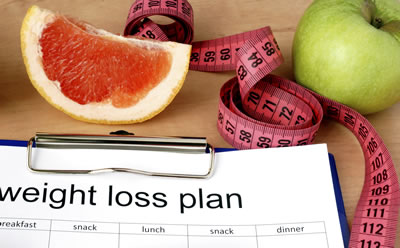The truth about nutritional fads and diets
Discover the truth about fad diets and fleeting health trends.

Fad diets
Though trends have changed tremendously over the years, fad diets and quick fixes have been around for quite some time. As early as 1863, William Banting of England was promoting the result of his low-carb diet that helped him shed weight, reported the Los Angeles Times in an article depicting the continuously-evolving mania of diets. However, there is a concrete reason for this endless cycle of latest health tips and newest evidence proving that diet x is the No. 1 solution.
As Dr. Lawrence J. Cheskin of the Johns Hopkins Bloomberg School of Public Health and director of the school's Weight Management Center was quick to point out to the LA Times, the problem is, almost none of these health trends that come and go have actually been analyzed subjectively. Moreover, if these fad diets actually worked, consumers wouldn't constantly be searching for the next fix.
“Almost anything you do that is a diet or a change in habits is going to look like it's working,” Cheskin told the source. “The question is, can they keep [off the weight] for the rest of their lives? That's a harder job.”
The Pritikin difference
From novel fad diet to the next “quick-fix”, various trends have been promising the perfect formula for weight loss for years. There was even a diet that came into play at one point during the 1960s, promising weight-loss by pushing for, instead of removing alcohol from one's diet. Today, fashion magazines, celebrities and even some in the medical field are often seen promoting trends such as juicing, souping or the tea detox. The common denominator with all of these trends, however, is that the results are often only temporary.
“It comes down to people looking for shortcuts to weight-loss.”
Even more importantly, pointed out Pritikin's Director of Nutrition Kimberly Gomer, MS, RD, LDN, many of these diets are not healthy. When you cut calories and eliminate certain food groups, your body misses out on many of the vital nutrients and minerals that it needs to function properly. No matter how the latest weight-loss trend is dressed up and presented, if a diet is under 1,000 calories per day, it's already off her book.
“It all comes down to people looking for shortcuts to weight-loss, answers and quick fixes,” Gomer said. “We're a culture of going to the doctor and leaving with a prescription, and that's the cure.”
And that is the key difference that sets Pritikin's Program apart from all others.
Proven results
A main component of the strategic, scientifically-proven weight-loss Pritikin Eating Plan is that the focus is not on counting calories, but rather on calorie density. Choosing whole, natural foods that are low in calorie density is the key for healthy, safe and effective weight-loss. By opting for foods such as fruits and vegetables, cooked beans and legumes, cooked whole grains and nonfat dairy products, you can eat more and still feel full without hurting your waistline. Far different from trends such as the tea detox, the Pritikin Eating Plan allows guests to lose weight without living with constant hunger. Better yet, these foods low in calorie density are also high in fiber and water – another bonus.
“We do it through calorie density, the number of calories in a given volume of food,” Gomer explained. “Guests are able to fill up beyond totally full and still lose weight.”

For example, vegetables typically contain between 65 and 195 calories per pound. When you compare that to the 1,600 to 1,750 calories per pound of dried cereals and potato chips, it explains how you're able to eat several times the amount of vegetables and still not negatively impact your weight. As foods get drier, the density goes up. Breads, cookies, cheeses, dried fruits, oils and granola bars are other examples of foods bursting with very high numbers of calories per mouthful.
However, there are several foods that guests are extremely surprised to discover are very high in calories. Often considered by the general public to be a healthy snack option, nuts and avocados are some of the most dense foods. And though they are not necessarily unhealthy, nuts can have as many as 2,500 to 3,000 calories per pound and that's what guests often find the most shocking, according to Gomer.
Healthy and sustainable
Diet fads limit important nutritional intake, can often be unhealthy and usually tend to stop working in the long run, reported the Centers for Disease and Control Prevention. On the other hand, the Pritikin Eating Plan is one that guests can take with them and incorporate into their everyday life. Instead of a temporary fix or a weight-loss pill, instead of slashing calories or starving on a juice cleanse, this is a real lifestyle that proves effective time and time again. They key, the CDC claims, is not a short-term change to eating habits but rather, a lifestyle adjustment. And that's exactly what Pritikin offers.
“We really pride ourselves at Pritikin that not only do we achieve attainable weight-loss, but that it is done healthily,” Gomer said. “We're looking at two things: health and sustainability. Most fad diets don't meet those criteria.”
Guests at Pritikin are able to follow an eating plan that is actually attainable and sustainable further down the road, even once they leave Pritikin. Incorporating a variety of fruits, vegetables, whole grains, legumes, starchy vegetables, fish, lean sources of protein and calcium rich foods, most guests find that they actually enjoy these foods even more than their old favorites. Moreover, once they have that knowledge base and education from the health and nutrition lectures, the cooking classes and the staff members, the eating plan is very easy to follow back home.